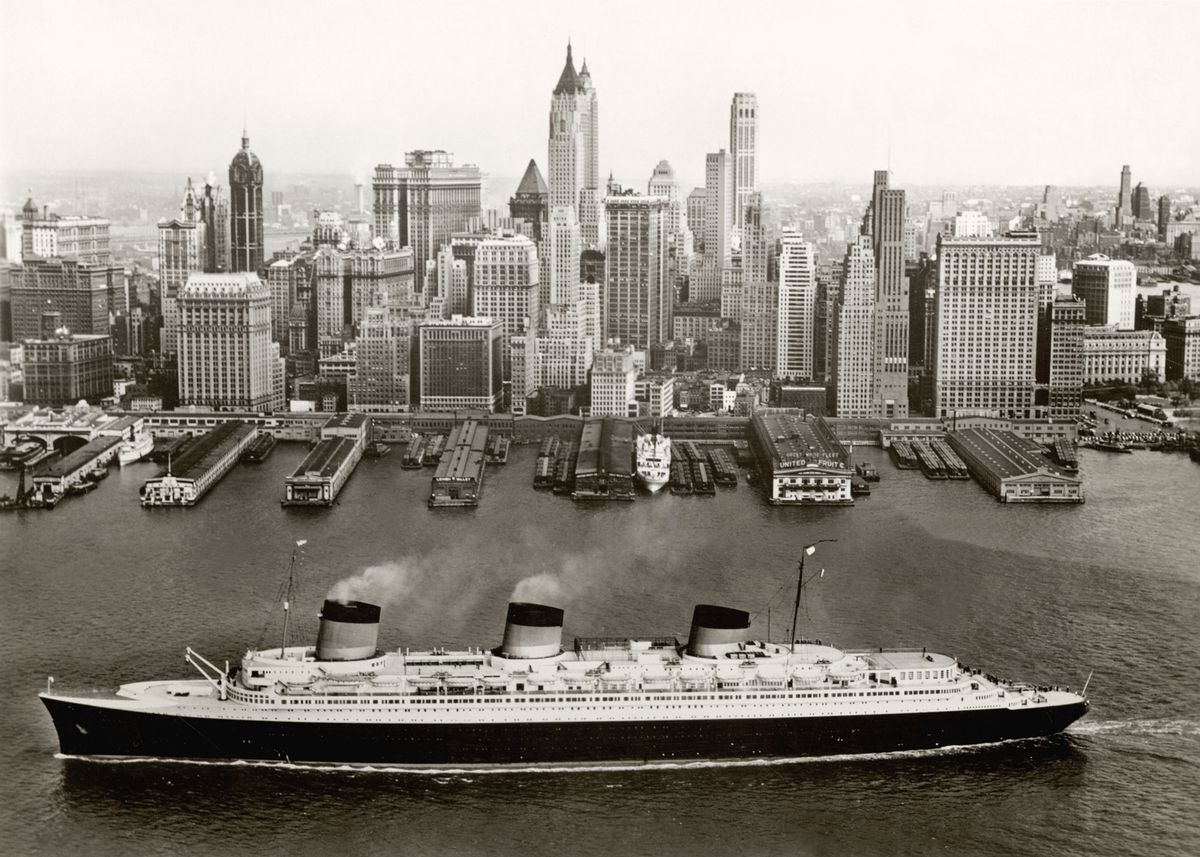Why anyone would want to go on a cruise, trapped for days on a floating island of gastroenteritis and enforced fun, is beyond me (see David Foster Wallace’s 1996 essay on the subject, Shipping Out: On the (Nearly Lethal) Comforts of a Luxury Cruise, for a masterful insight into modern-day cruising). But the golden age of ocean travel, from the end of the 19th century to the first half of the 20th, seems like a whole different ball game. Ocean Liners: Speed and Style (until 17 June) at the Victoria and Albert Museum delves into a glamorous world of Art Deco armchairs, silk dresses and diamond-encrusted tiaras as well as the pistons and steam engines that enabled these vessels to travel the world’s oceans. There are around 250 artefacts on show including Stanley Spencer’s monumental painting Riveters (1941), a dinner menu for canine guests and the largest surviving fragment of the Titanic, a wooden panel of the door of the first-class lounge, which returns to the UK for the first time since its maiden voyage.
The latest “results” of the 2017 UK general election are in: Cornelia Parker has unveiled two videos and a series of 14 photographs in response to last year’s vote, capturing the conflicted political scene of post-Brexit UK, when the country’s leadership seemed paralysed. The disquieting eight-minute video, Left Right & Centre, was recorded using a drone that hovers over an eerily empty House of Commons chamber, piled high with the House’s newspaper subscriptions. In contrast, the video Election Abstract is a three-minute onslaught of images taken from Parker’s lively Instagram feed, through which she has been documenting her experience since became the official election artist in April last year. The photo series is made up of 14 framed photographs, also from her Instagram account. The works are currently on show at Westminster Hall (until 11 April).
The British artist Eddie Peake will be assuming a performative persona for his latest exhibition at White Cube Bermondsey, eschewing his usual naked (or near-naked) performers. For Concrete Pitch (until 8 April), Peake’s nine-week performance will see the artist taking up residence in the vast gallery that he has bathed in rosy pink light. Visitors might see the artist sitting at a desk doing his emails in a specially constructed dwelling space—its glass windows a two-way mirror so he cannot see out—or lying on a couch that he has dragged into the space. Or he might be interacting with elements of his new sculpture Stroud Green Road, named after the high street of his childhood neighbourhood. The show is permeated with highly personal references—the title alludes to a playground used by all the communities in his former stomping ground of Finsbury Park—but it is more than an exercise in nostalgia. Peake also aims to address our harsh political climate and, in the words of one of his text paintings, “a more uncomfortable and realistic history”.


